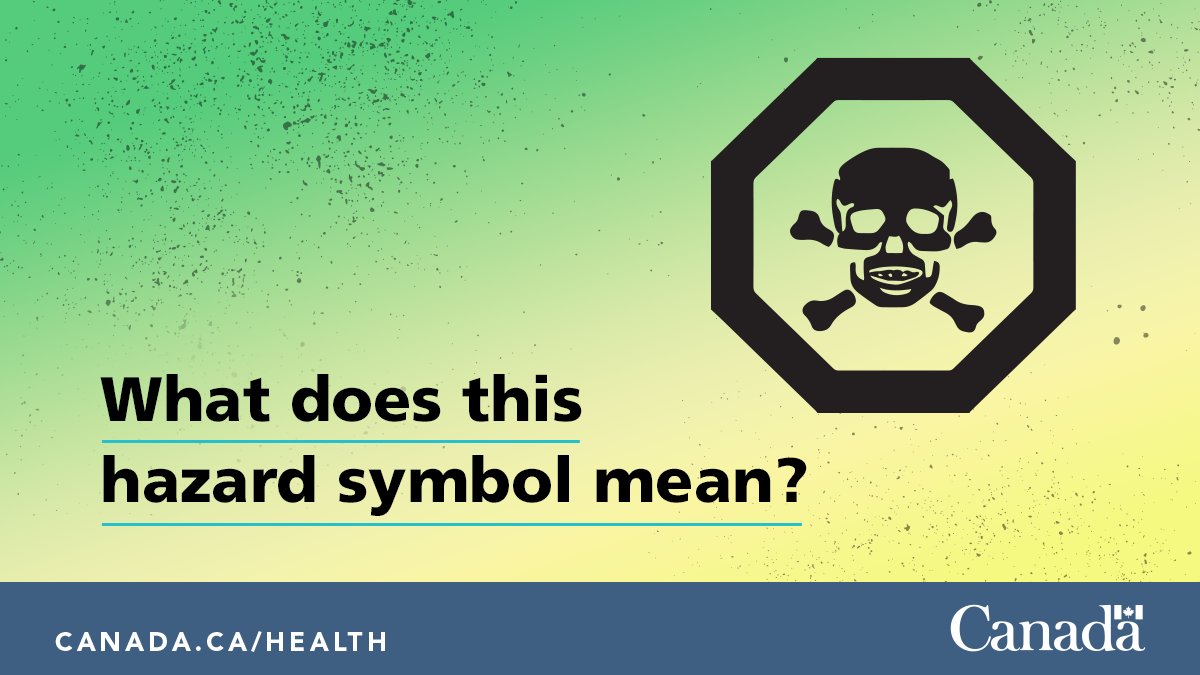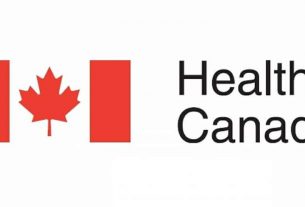**** Health Canada Release
Understanding hazard symbols
Hazard symbols are on the labels of many household chemical products in and around your home and garage, like cooking spray, cleaning products, paint and paint thinners, drain cleaners and windshield washer fluid.
Hazard symbols have three parts:
What to do if someone is exposed to household chemical products
If someone has been exposed to a household chemical product and you think they may have been harmed:
- Call a poison centre or your health care provider right away.
- Tell the person who answers the phone what the product label says. There should be first aid instructions surrounded by a border on the back or side of the product label.
- Bring the product container with you when you go for help.
- Report the incident to Health Canada.
Understanding hazard symbols
Hazard symbols are on the labels of many household chemical products in and around your home and garage, like cooking spray, cleaning products, paint and paint thinners, drain cleaners and windshield washer fluid.
Hazard symbols have three parts:
1. Hazard symbol pictures
The picture tells you the type of danger:

EXPLOSIVE
The container can explode if heated or punctured. Flying pieces of metal or plastic from the container can cause serious injury, especially to your eyes.

CORROSIVE
The product can burn your skin or eyes. If swallowed, it can damage your throat and stomach.

FLAMMABLE
The product or its fumes will catch fire easily if it is near heat, flames, or sparks. Rags used with this product may begin to burn on their own.

POISON
If you swallow, lick, or in some cases, breathe in the chemical, you could become very sick or die.
2. Hazard symbol frames
The shape of the frame around the hazard symbol tells you what part of the product is dangerous:

If it’s a triangle, it means the container is dangerous.

If it’s an octagon, it means the contents are dangerous.
3. Signal words
The signal word(s) underneath the hazard symbol explain the degree of risk:
Symbol –

Signal word – DANGER EXPLOSIVE
Signal words:
- CAUTION means temporary injury may result. Death may occur with extreme exposure.
- DANGER means may cause temporary or permanent injury, or death.
- EXTREME DANGER means exposure to very low amounts may cause death or serious injury.
Safety tips for bleach and diluted bleach
- NEVER mix bleach with other chemicals especially with glass cleaners, other products containing ammonia or acids such as vinegar. Mixing bleach and ammonia or other chemicals can produce toxic gases.
- NEVER clean yourself or your child with bleach or diluted bleach.
- Ensure proper ventilation by opening windows or doors and running exhaust fans, during and after using the product.
- Use goggles and rubber gloves to protect your eyes and skin when using the product.
- Wash your hands with soap and water after cleaning with the product.
- Keep bleach out of sight and reach of children.
For more information on safely using household bleach at home and in the workplace, visit the Canadian Centre for Occupational Health and Safety.
Using household chemical products
- Read the label and follow all instructions for safe usage when using household chemical products.
- Never mix household chemical products together. Some mixtures can produce harmful gases.
- Open windows or use exhaust fans to help keep your home well ventilated during and after projects and renovations.
- Take fresh air breaks as needed.
- Wear the recommended personal protective equipment such as protective clothing, gloves, goggles, and masks, as described on your household chemical products.
- Wash your hands with soap and water after using the product.
- Check that child-resistant closures are in good working order.
- Child-resistant doesn’t mean child-proof. Close the cap on the container all the way even if you set it down for just a moment.
- Teach children that hazard symbols mean Danger! Do not touch.
- Program emergency numbers into
Storing household chemical products
- Store tightly closed in their original containers and according to instructions.
- Keep all safety information.
- Keep out of sight and out of reach of children and pets.
- Store paints, solvents, gasoline, fuels, varnishes and other products that may release harmful fumes or catch fire outside of your home.
- If possible, store products in a separate building that isn’t connected to your home’s ventilation system.
- Avoid storing chemical products in areas with fluctuating temperatures.
- Regularly check containers for leaks or damage.
Disposing of household chemical products
- Follow municipal guidelines on how to dispose of chemicals and other hazardous waste.
- Dispose of prescription drugs safely.
- Never:
- re-use empty containers
- burn household chemicals and containers
- pour the contents down the drain unless directed
- Reduce waste by buying only what you need.




